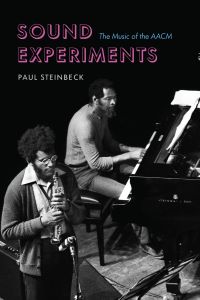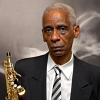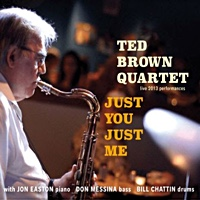Home » Jazz Articles » Book Review » Sound Experiments: The Music of the AACM by Paul Steinbeck
Sound Experiments: The Music of the AACM by Paul Steinbeck

Courtesy Roberto Masotti
 Sound Experiments: The Music of the AACM
Sound Experiments: The Music of the AACMPaul Steinbeck 272 Pages ISBN-13: 978-0-226-82953-1University of Chicago PressHardback 2022/ Paperback 2023
Paul Steinbeck's Sound Experiments is a historical narrative and technical analysis of the music of the Association for the Advancement of Creative Musicians (AACM). Steinbeck traces the chronology of this wildly creative organization from its origins in the mid-1960s to the present day through the course ten chapters, each dedicated to a particularly influential album, composition, or live performance. Published by University of Chicago Press, the hardback edition of Sound Experiments first appeared back in 2022 and is now even more accessible to readers in this new paperback edition.
Steinbeck's book begins with a detailed analysis of the two albums which sparked the AACM into life: Roscoe Mitchell's Sound (Delmark, 1966) and Levels and Degrees of Light by Muhal Richard Abrams (Delmark, 1968). Experimenting similarly with collective improvisation and extended 20+ minute compositions, both bandleaders contrasted greatly in their approach to timbre and mood. Mitchell's album continued the improvisational innovations of Ornette Coleman with the volume, aggression and sonic chaos dialed up tenfold, whereas Abrams' album emphasized sparse textures, woodwind pedal tones and even birdsong sounds. The sonic contrasts of these two founding albums sets the tone for the rest of the book, in which the never-ending search for greater expression, creativity, and iconoclasm is always at the forefront of each musician's imagination.
The following nine chapters trace the evolution of the AACM discography over subsequent decades. From the 1970s, it covers classic albums such as For Trio by Anthony Braxton (Arista, 1977) as well as Air Time (Nessa, 1978) by Henry Threadgill, Fred Hopkins and Steve McCall. From the 1980s, Steinbeck chooses George Lewis' composition 'Voyager' (1987), an early example of computer-music in which intelligent algorithms improvised in real time dialogue with human musicians. From the 1990s, 2000s, and 2010s, Steinbeck analyses music by the likes of Fred Anderson, AACM Great Black Music Ensemble, Wadada Leo Smith, and Nicole Mitchell.
The final chapter brings the narrative right into the present day, with the analysis of a 2015 album, Artifacts (482 Music), recorded by the Artifacts Trio comprised of cellist Tomeka Reid, flautist Nicole Mitchell and drummer Mike Reed. Studded with compositions by and homages to former AACM members, Steinbeck demonstrates the enduring importance of history and lineage to current AACM members.
The author's analysis is undoubtably highly technical, and his book includes extensive musical notation and plates of transcriptions sourced through his personal connections to members of the AACM. Reading whilst simultaneously listening to the recordings cited is therefore a seamless and highly rewarding (if not sometimes quite exhausting) process. The sheer complexity and experimental nature of the AACM's music, in particularly its emphasis on collective improvisation, free form, and unconventional 'sound tools,' really tests the limits of standard musical notation. This is something that AACM constantly grappled with, and their ability to experiment with a mixture of strange symbols, mathematical approximations, colors and words to depict their musical intentions is seriously impressive. Even for readers who do not read music so fluently, the inclusion of highly visual examples of non-standard notation results in an engaging and highly immersive reading experience.
Steinbeck's focus is not exclusively musical; he remains interested throughout with the social, political, and economic forces that underpinned the evolution of the music. Successive generations of AACM musicians played a crucial role altering perceptions of 'art' globally, not only in music but across other domains such as visual art, academia and fashion. They were especially important in breaking down the racial barriers which traditionally segregated 'white experimental composers' from 'African-American jazz musicians.'
The music of the AACM is certainly some of the most artistically challenging music ever recorded. Sound Experiments is therefore an invaluable companion for those looking to dip their toes into this fascinating discography, as well as a rich source of information for those looking to dive more deeply into the depths of musical analysis.
Tags
Book Review
Tom Spargo
United States
Illinois
Chicago
Roscoe Mitchell
Muhal Richard Abrams
anthony braxton
Henry Threadgill
Fred Hopkins
Steve McCall
George Lewis's
Fred Anderson
The Great Black Music Ensemble
Wadada Leo Smith
Nicole Mitchell
Artifacts Trio
tomeka reid
Mike Reed
PREVIOUS / NEXT
Support All About Jazz
 All About Jazz has been a pillar of jazz since 1995, championing it as an art form and, more importantly, supporting the musicians who make it. Our enduring commitment has made "AAJ" one of the most culturally important websites of its kind, read by hundreds of thousands of fans, musicians and industry figures every month.
All About Jazz has been a pillar of jazz since 1995, championing it as an art form and, more importantly, supporting the musicians who make it. Our enduring commitment has made "AAJ" one of the most culturally important websites of its kind, read by hundreds of thousands of fans, musicians and industry figures every month.
























